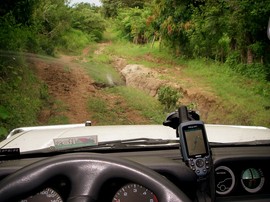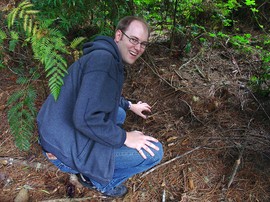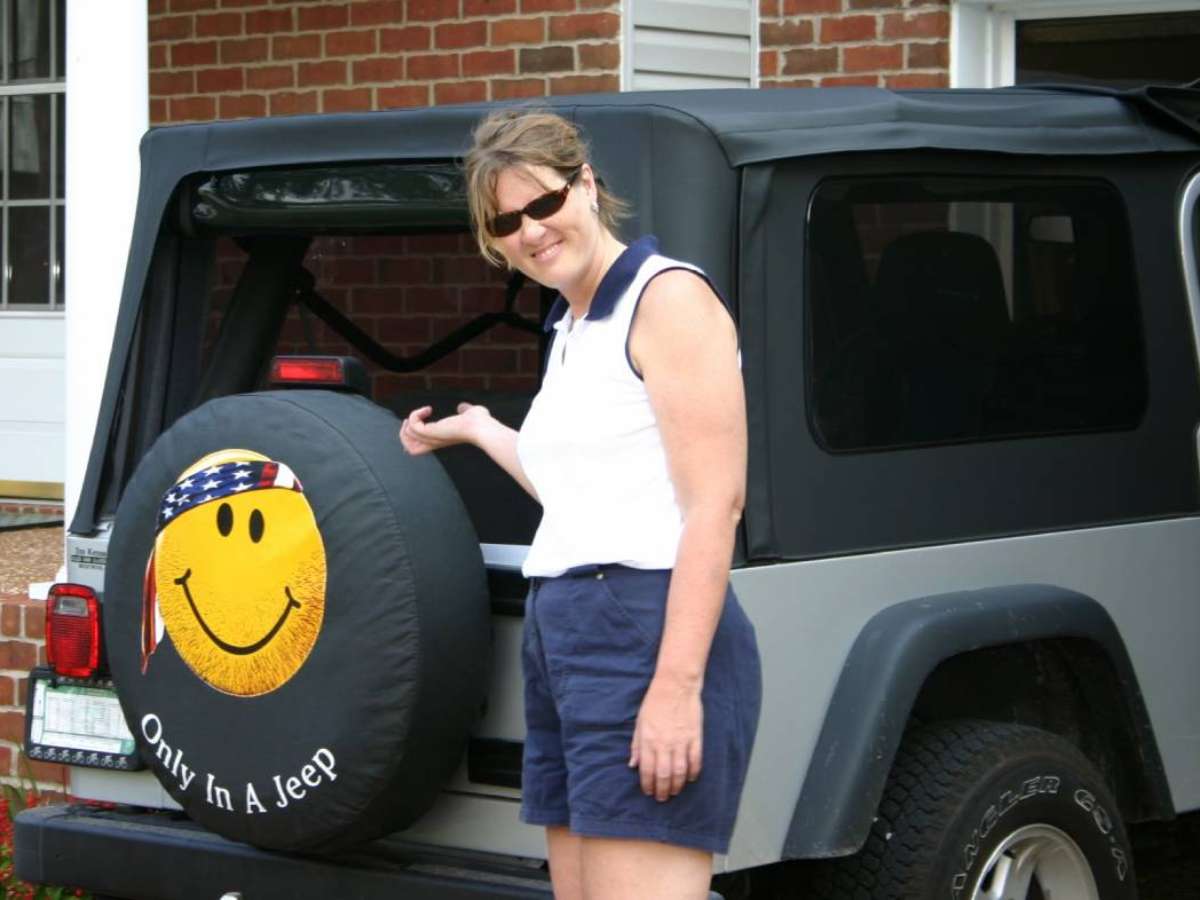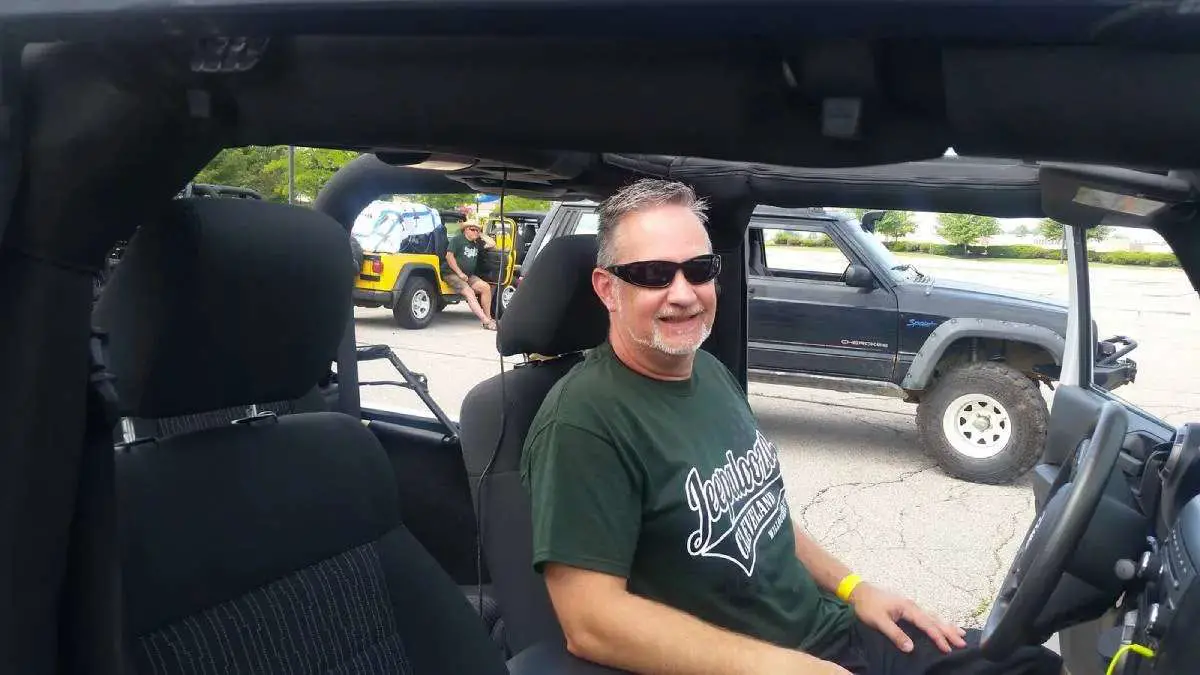 When it comes to geocaching, you can go the safe and easy route, or you can choose the more adventurous route. Both are quite fun, but for us, the best part of geocaching is the journey to and from the cache location itself, so the more adventurous the better! Usually that means venturing off the beaten path in search of caches hidden in some of the most remote locations.
When it comes to geocaching, you can go the safe and easy route, or you can choose the more adventurous route. Both are quite fun, but for us, the best part of geocaching is the journey to and from the cache location itself, so the more adventurous the better! Usually that means venturing off the beaten path in search of caches hidden in some of the most remote locations.
These caches can often be quite challenging to find — even with the help of a GPS! And, if you’re a seeker of the most “challenging” caches, then you’ll want to be sure you have the right wheels beneath you to get you there and back safely.
Following are some tips for geocaching offroad with your 4×4.
Geocaching Where You Live
Before you go thinking that there won’t be any hidden caches in your remote little town, and wondering if anyone in your neck of the words even knows what Geocaching is, check this out…
Enter your zip code here and with just one click, you’ll see a long list of hidden caches in your tiny little town! How cool is that?!
At the time of this writing, there were more than 650,000 active caches just waiting to be found.
Why Jeeps Make Great Offroad Geocaching Vehicles
It’s one thing to see where an item is hidden, but quite another thing to actually be able to get to the cache location. After all, some caches are hidden in some pretty remote areas!
There are geocaches hidden in some of the strangest locations, including faraway locations all across the United States (and beyond!) — both above and below ground, inside and outside buildings.
 For starters, Jeeps are great vehicles for offroad geocaching — especially Jeep Wranglers, because they’re more compact and easily handle narrow, steep, rocky conditions. Wranglers are small enough for the trails and big enough for some passengers to help you locate the cache.
For starters, Jeeps are great vehicles for offroad geocaching — especially Jeep Wranglers, because they’re more compact and easily handle narrow, steep, rocky conditions. Wranglers are small enough for the trails and big enough for some passengers to help you locate the cache.
Ideally, your offroad geocaching vehicle will have good ground clearance, short overhangs, protection for vulnerable parts underneath, low gearing for crawling and compression breaking, some sort of limited slip or locking differential, and good all-terrain truck tires.
Jeeps are ideal, but many other 4×4’s can maneuver through the cache locations just as easily. In reality, anything with a good engine and drive train will work on a 4×4 geocaching expedition. No need to worry much about looks or brand.
Where To Find (Or Hide) Caches
 Finding the location of a cache can be extremely entertaining, as well as challenging — for both the hider and the seeker.
Finding the location of a cache can be extremely entertaining, as well as challenging — for both the hider and the seeker.
For example, some caches are placed in areas accessible only by those with specific equipment on hand — like on the side of a rocky cliff (accessible by those with rock climbing equipment) or under water (accessible by those with scuba equipment).
Some caches are barely off the beaten path, making them easy to find by GPS coordinates alone. Other caches require traversing miles of rough terrain (best done in a 4×4) or long and difficult hiking (best tackled by those with adequate hiking and survival gear).
Of course, you can even create your very own cache! Just pack it up and hide it somewhere offroad, list the location of the cache here for others to try and find it, then sit back and reap the many rewards of Geocaching!
The following tips apply to all offroad geocaching ventures… whether you’re in search of a hidden cache or hiding one (or more) yourself for others to find.
What To Take When Geocaching Offroad
You might be torn between the Boy Scout motto of “Be Prepared” and the adventurist’s view of “Minimalist is Better”.
 When it comes to heading off-road in search of a cache, which is it?… “Take along enough supplies for a hike” or “Just toss in your GPS, cell phone, and a few items to trade”? Most offroad geocachers fall somewhere in between.
When it comes to heading off-road in search of a cache, which is it?… “Take along enough supplies for a hike” or “Just toss in your GPS, cell phone, and a few items to trade”? Most offroad geocachers fall somewhere in between.
In addition to the “typical” items (like a GPS, snacks & water, a whistle, matches or a lighter, a signal mirror or old CD, sunscreen, insect repellant, and a camera) that people are likely to take along on a geocaching expedition, some of the often overlooked, yet highly valuable items to take along include the following:
- Printed Cache Pages From Website – Otherwise, you’ll likely find yourself asking, “Hmmm, I wonder if I entered the right coordinates” during those last moments as you get near the cache location. Plus, there are hints and clues you can study along the way.
- Pen & Notebook – If you find several caches in one day, it’s very difficult to keep track of what you took and you left behind from each cache. You may want to make notes directly on the cache printout sheets, and then later add them to the official online log for each cache you found. Or, you could use your own notepad & pen to keep track of each cache visit. Or, try the hi-tech option: a mini voice recorder! Some cellphones have this capability built-in. Recording your “finds” is a lot quicker and easier than writing in a notebook.
- Quality Backpack/Vest/Bag – Good hiking backpacks distribute weight even
ly and have a number of padded pockets. Backpacks made for photographers are ideal, as they have a number of customizable dividers and pockets. Truth is, most geocachers don’t use a backpack at all; instead they’ll wear a photographers vest, or simply pack a lightweight bag. The difference is that a photo vest will allow you to carry all the gear you really need, while keeping your hands free the entire time. And a photo vest is more maneuverable in tight quarters than a bulky backpack.- Hiking Boots – Without a doubt, be sure that you’re wearing a good pair of hiking boots and socks that will wick the sweat away, rather than giving you blisters. Keep in mind, you may be walking through mud, sand, even water on occasion.
Small Shovel & Gloves – For the more challenging hidden caches, people are getting quite creative at hiding them. You never know what you’ll have to dig in and around to find the buried treasure. You can find small, portable (self-folding) shovel/axe combinations in most camping departments. A pair of heavy-duty work gloves will make it easier to lift rocks and sticks, or dig through piles of leaves.
- Telescoping Mirror – It looks like a dentist’s mirror, but this mirror is a bit larger and telescopes from 6″ to 24″. It’s great for looking behind and under things — from a distance.
- Neon Colored Placemarkers – Once you leave the vehicle to finish the rest of your search on foot, be sure to mark your way with colorful string or ribbon on trees and other markers. Those “hunter orange” colored markers work particularly well.
Secrets For Success When Geocaching Offroad
No matter how adventurous you aim to be, it’s important to plan ahead.
When deciding what to take out there with you in your search for a cache, consider the descriptions of the terrain and the amount of time you’ll likely be spending out there. Remember, whenever you’re in the backcountry, prepare as though you have to spend the night in the woods. You never know what could happen… you might actually have to spend a night in the woods!
And finally, here are some tips and insider secrets for a successful offroad Geocaching adventure:
- Keep in mind that distances can be deceiving. When using a GPS unit to find a cache, the unit only knows how close the site is in a direct line. Therefore, while you may only be a mile from the cache, there could be a river in the way or a difficult hill to climb. To avoid any surprises, look at a topo map of the area first.
- When you leave your vehicle to search for the cache, take a moment to input the waypoint of your vehicle’s location so you will be able to easily find your way back.It’s easy to get disoriented when you’re caught up in the hunt for the cache.
- The final 30-100 feet are always the hardest. It can be difficult to hone in on the exact location where the cache has been hidden. Use as much information as you’ve been given in the notes about this particular cache. For example, it helps to know the type of container the cache is in.
- When you leave your vehicle to get to the cache, resist the urge to travel light. For example, just because your GPS unit says you’re less than 500 feet from the cache, chances are it will be harder to find than you think, and/or you might take the wrong trail or have to climb a big hill or something. Better to be safe than sorry – take along the necessities that might seem burdensome but could actually save your life. The lesson: No matter how close the GPS unit says you are to the cache, always take along things like water and and a cell phone or radio.




